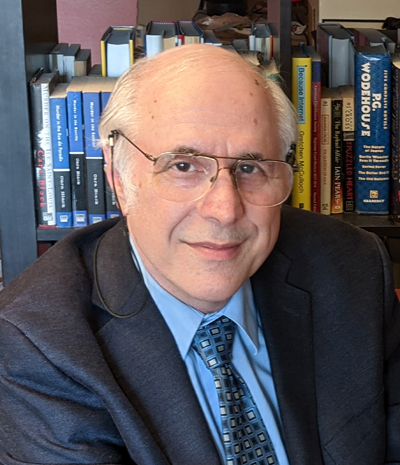Most of the time when industries want more money from government, they cite their success. It takes a special kind of chutzpah to make the case for more taxpayer money based on your own failure.
Yet that’s what the “residential treatment” industry has been doing in Colorado. News accounts have documented a litany of failure, from abuse of institutionalized children to runaways dying. Yet we are told the solution is to pump even more money into these places because they can’t scrape by on a mere $250 to $600 per-day per-child. The industry says we also should make residential treatment more like jail, allowing locked doors and physical force against youth. They’re also complaining about the minimal standards institutions must meet under the federal Family First Act so states can get federal aid for stashing kids in such places.

Courtesy of Richard Wexler
Richard Wexler is executive director of the National Coalition for Child Protection Reform.
Similar themes have been sounded across the country, as news accounts bemoan children forced into makeshift placements — while almost never asking if all those children should have been taken away, or whether there are better options than institutions. (The answers are no and yes, respectively.) But nowhere is the residential treatment industry as brazen as Colorado.
They haven’t gotten their way yet. But they did get the legislature to create a “task force” with a budget of nearly $100,000 run by the state’s child welfare “ombudsman.” It’s supposed to spend the next two years determining “the root causes of why children run away from out-of-home placements” and figure out how to stop them from running.
Allow me to save the state a little money and a lot of time: Children run away from out-of-home placements because they are in out-of-home placements. Institutionalization is inherently harmful, inherently traumatic and almost never necessary. You stop children from running away from awful places by not putting them in awful places.
Residential treatment has always failed, as one scandal after another, after another after another and a pile of rigorous research makes clear. The residential treatment model is based on the idea that if you put young people who supposedly have the worst behavior problems all in one place right at the age when they are most vulnerable to peer pressure, they will get better. Colorado loves this approach. Colorado institutionalizes children at a rate 60% above the national average.
There are two main ways children wind up institutionalized. One is when family policing agencies, a more accurate term than “child welfare agencies,” take them from their parents, often needlessly, when family poverty is confused with neglect. The other is when desperate parents feel they have no alternative — a false impression the residential treatment industry is eager to exploit. As The New York Times put it: “The industry depends on desperate, often compassionate parents, some of whom fall for slick marketing.”
So the industry tells us for some youth nothing else works. After all, these young people have, to use the industry’s own offensive term, “blown out” of foster homes. But that’s because “child welfare” systems fail to provide the intensive help children’s own families or foster families need.
How successful has this exploitation been? Consider what happened when the state of Colorado closed a residential treatment center with an appalling history:
In 2019, state regulators identified 83 potential licensing violations, including that illicit drugs, such as LSD, spice and Xanax, were smuggled into the facility. Many of the complaints involved runaways, lax supervision, fights between youth and inappropriate use of restraints, or physical altercations between staff and kids.
But a father whose 17-year-old son ran away when the center was closed said he actually was sorry to see the place shut down, because he couldn’t imagine any other way to handle his son and when he was restrained he only “occasionally had bruises.”
But contrary to industry propaganda, there is nothing residential treatment does that can’t be done better, at lower cost, with “wraparound” programs, in which everything a family or foster family needs is brought right into the home. In one video, wraparound pioneer Karl Dennis explains how wraparound kept safely at home a youth so difficult that even the local jail couldn’t handle him.
The younger the child the worse the effects of institutionalization. The Colorado task force is named after Timothy Montoya, a boy institutionalized at the age of 12. He was killed when he ran away and was hit by a car. His mother has bravely shared his story and, in an act of incredible courage, is willing to relive the trauma to help others, by serving on the task force. I applaud her for her effort. That father of the 17-year-old who was “only occasionally had bruises” is showing the same courage and doing the same.
But the deck is stacked. The task force is filled with foster parents and residential treatment providers, and an assortment of state and local government agency representatives. But there is no parent on it who had a child needlessly taken away against that parent’s will, and ultimately institutionalized. Nor is there a lawyer who regularly represents such parents, even though wrongful removal is especially likely in Colorado, where children are torn from their homes at a rate 30% above the national average, even when rates of child poverty are factored in.
In a state where Black children are 4% of the population but 11% of the foster child population, the task force has not one Black member. In a state where Native American children are in foster care at triple their rate in the general population, there is no Native American on the task force either. The ombudsman’s office says it’s trying to find at least one of each to join the task force — but the fact that they’re moving full-speed ahead without them is like a neon sign flashing “tokenism.”
In contrast, the task force does include, as a voting member, the director of the trade association for the state’s residential treatment industry — someone whose job is to demand more money, more power and less regulation for residential treatment centers. That’s like putting Donald Trump’s campaign manager on the Jan. 6 committee.
All that will make it all but impossible for the task force to face up to the hardest truth: Timothy Montoya might be alive today if his mother could have gotten wraparound services in her own home — but none were available where the family lived. That’s not an argument for spending more on places like the ones that failed Timothy; that’s an argument for more alternatives — or for just giving parents the $250-to-$600-a-day to buy their children whatever help they need.
Oh, I’m sure the task force will end up recommending more “preventive services” as part of a “full continuum of care.” But residential treatment is not “care” and does not belong on any such continuum. And, in any event, you can’t do both at once. Residential treatment is the tapeworm in the child welfare system. The alternatives will never be available as long as residential treatment is scarfing up all the money — and demanding even more. And as long as there is an easy place to dump difficult kids, no one will invest the time to create better options.
It’s also commonly claimed that Colorado has a shortage of foster homes, so children have to be institutionalized because there is no place else for them. But the data makes clear the “shortage” wouldn’t exist if Colorado stopped taking away children needlessly.
Yes, Colorado’s residential treatment industry pays lip service to alternatives — everybody does. But it will never happen unless the legislature embraces a real reform agenda to reduce institutionalization of children. It doesn’t take a task force to figure that out.
***
Richard Wexler is executive director of the National Coalition for Child Protection Reform.






























